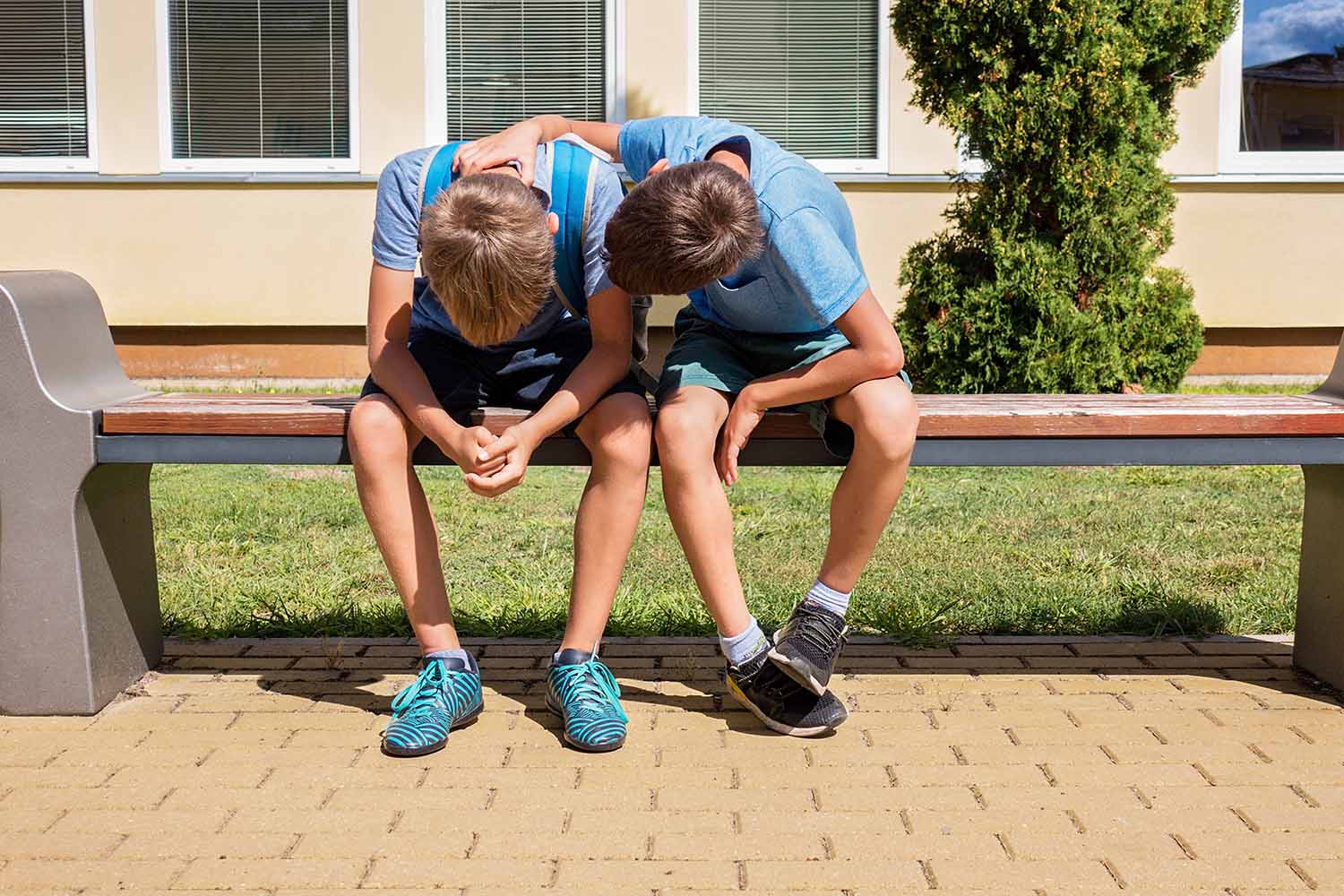How to Develop Empathy in Students in a Way That Will Stay With Them for Life
Empathy is one of the most important SEL (social-emotional learning) skills that you can help your students develop. When you foster a strong sense of empathy in your classroom, you help support each individual student as well as your classroom community as a whole.
Teaching empathy can:
- Reduce bullying and conflict in your classroom
- Help your students practice acceptance of others well into adulthood
- Build stronger relationships both between students as well as between you (the teacher) and your students
- Help your students be better leaders and partners as adults
- Help create an emotionally safe classroom environment
Here are some tips to effectively help your students develop empathy for life.
How Can We Develop Empathy in Students?

At Calm Classroom, we offer plenty of exercises to help you explicitly teach the skill of empathy to your students. And this is important; by implementing these empathy exercises, you help your students understand that the skill of empathy is just as important academic skills like math or reading.
But on top of these exercises, there are also more subtle ways to foster empathy in your classroom and help your students develop this important skill.
One of the most important things you can do is to model empathy yourself. This goes both for your students as well as other adults that you may interact with. Even if you don’t agree with an adult, show your students how to be empathetic in these situations.
For example, let’s say that you’re irritated with a substitute teacher for not following your sub plan. Rather than sharing your irritation with your students, show empathy. You might say something like, “I wonder why the sub didn’t do that activity with you. She may have been feeling like her day was too busy.”
You can also model empathy for your students by listening to and validating their feelings. Avoid expressions like, “Don’t cry,” or “There’s no reason to be upset.” Empathy is about seeing the world through another’s eyes – so make an effort to see the world through your student’s eyes. Instead of brushing their concerns off, try to understand what’s making them feel upset. Provide validation and empathy by saying something like, “I can see that you’re feeling really sad because of what happened at recess.”
Another skill to model empathy is to ask open questions, and provide active listening. When speaking with your students (or to other adults), explore further by asking open questions. Open questions express genuine curiosity and invite the other person to self-reflect and tell you more about what they’re feeling. Some examples of good open questions are:
- What’s making you feel that way?
- Can you tell me about the last time you felt this way?
- How do you think you want to solve this situation?
When your students answer these questions and express themselves to you, practice active listening. Lean in, and make appropriate eye contact. Demonstrate in your body language and nonverbal communication that you’re listening to them and that you’re interested in what they are saying.
You can also use reflective listening to increase empathy. One of the core skills of empathy is identification of feelings – when kids know how to identify and name the emotions they experience, then they may be more likely to recognize and empathize with these feelings in others.
For example, you might say something like, “I saw that you got into a fight at recess. You must be feeling really mad and hurt.”
3 Exercises for Your Students to Help Them Develop Empathy

Here are 3 easy ways to teach empathy to your students in a way that will stay with them for life.
Storytime empathy
This is an easy way to incorporate an empathy exercise into your existing curriculum. The next time you read a book together as a class, ask questions about the characters to encourage your students to strengthen their empathy muscles.
Some example questions you can ask include:
- How do you think this character is feeling?
- What is making them feel this way?
- When have you felt this way before?
- How would you feel if you were this character?
- How do you know the character is feeling this way?
Acting out feelings
Another simple activity to increase feelings identification is to have your students “act out” different feelings in a type of feelings charades.
Create a deck of cards (index cards work great) with one emotion written on each card. Vary the emotions on your students’ developmental level. Kindergarten students may not be able to understand complex emotions, but older students should be able to understand deeper emotions such as frustrated, disappointed, and grieving.
Have your students draw a card, and act out the feeling that’s on the card. They can act it out with their body language or tell a story about a time they felt this way. Invite the other students to guess what emotion is being portrayed.
Mindfulness meditation
Research shows that people who practice mindfulness are more empathetic. By leading your students in a mindfulness exercise, you can help them strengthen their empathy muscle. Loving kindness meditation (or metta meditation) is a specific type of meditation that can also help your students practice empathy in an intentional way.
The Calm Classroom curriculum is full of age-appropriate, easy-to-implement mindfulness exercises for students of any age. Get in touch with us to learn more about how we can support your school community.





SIGN UP FOR OUR NEWSLETTER